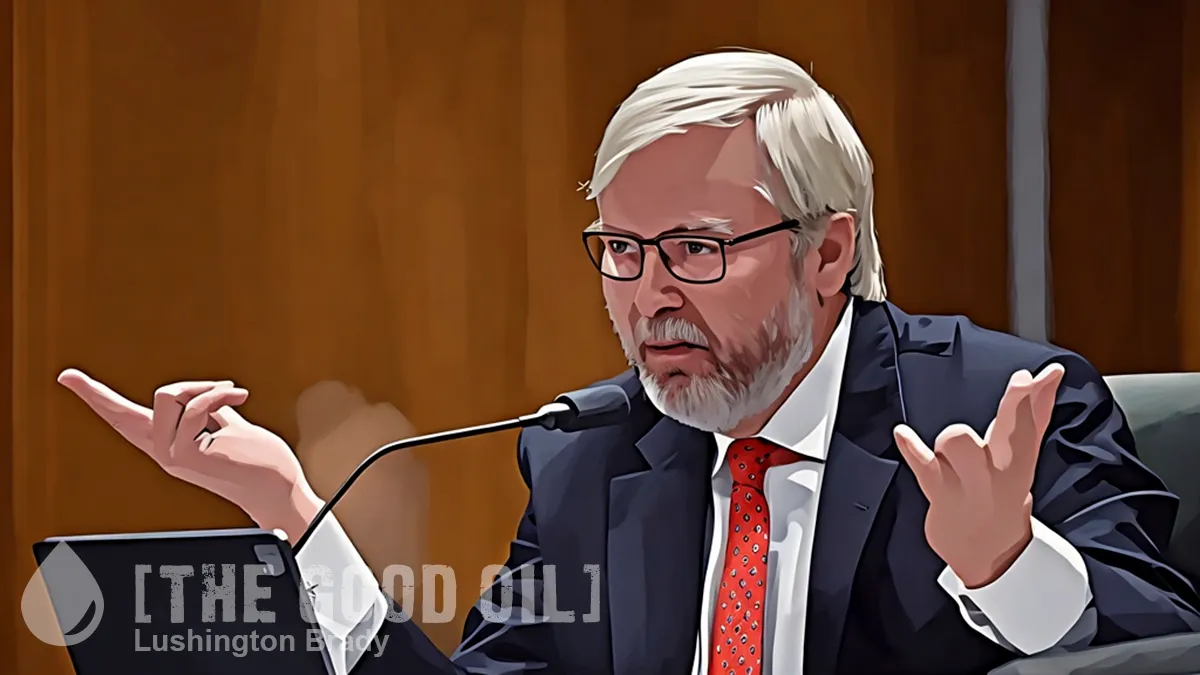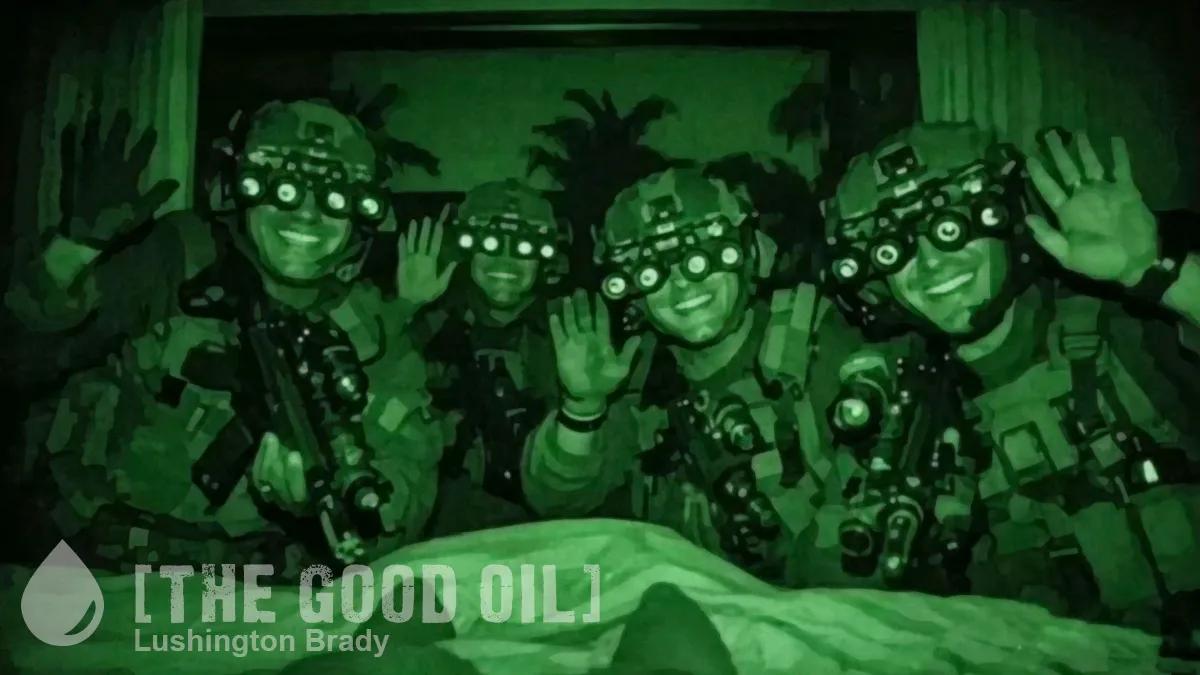Table of Contents
Bryce Edwards
I am Political Analyst in Residence at Victoria University of Wellington, where I run the Democracy Project and am a full-time researcher in the School of Government.
People still want to know why the new government has changed laws around tobacco and smoking. In particular, the big question is about what has motivated the changes. Do government ministers genuinely believe that the previous rules were wrong or are they just pandering to “Big Tobacco”?
On the one hand, Associate Health Minister Casey Costello and the government say that her reforms are based on evidence and long-held policy stances – especially of her own party, NZ First. On the other hand, there’s a strong belief amongst critics that various tobacco and nicotine reforms have been undertaken to help the tobacco industry and its corporate lobbyists. Neither side has been entirely successful in winning the argument yet. And [last] week, the debate resurfaced.
Costello faces her critics on links to Big Tobacco
Public health experts have come to refer to the associate minister of health as the “Cancer Minister”. Their hostility towards the minister is possibly greater than any other sector group opposing the current government. And that’s saying a lot.
Yet Costello agreed to answer these critics in a forum in Wellington on Tuesday organised by Health Coalition Aotearoa. As the Listener’s Greg Dixon says, the minister couldn’t be accused of hiding from her critics: “Whatever else Associate Health Minister Casey Costello is lacking… it is not courage. The controversial MP’s decision to front angry public health experts at a forum organised by Health Coalition Aotearoa this week was pretty ballsy.”
RNZ reported on the meeting, saying that Costello “met a fiery reception from angry doctors” and faced heckling from the audience as she spoke. The chair of Health Coalition Aotearoa, Boyd Swinburn, said, “I haven’t seen the tension between the public health sector and the government so high.”
He also questioned Costello about where her evidence informing tobacco reforms had come from, asserting that “This is really the tobacco industry pulling the strings of tobacco law in this country.” Similarly, Auckland University’s population health expert Chris Bullen claimed that “the tobacco industry is being called on for advice” from the government.
According to the reporting of the Herald’s Adam Pearse, “Costello frowned and shook her head” to such allegations. She responded, saying, “There has been no association with the tobacco industry and that has not been where I have gone to for advice.” She blamed “media noise” for such “misconceptions” about her links to tobacco companies.
Pearce also reported that “one of Costello’s staffers in the crowd told moderator and HCA co-chairman Boyd Swinburn that Cabinet decided government policy, not individual parties”. And after the meeting, she told Pearce that she “had a dim view of their inquiries regarding her links to the tobacco industry”, saying: “I think that was very unhelpful to their objectives.”
Costello was upfront to the health audience that she was out of sync with them on repealing the last government’s smokefree generation policy, but she argued that she had the same goal as them – about reducing smoking in New Zealand: “I appreciate that our pathway forward has not been consistent with the direction you wanted to take but I can assure you our goal is common and our determination is equal.”
Part of her argument is that putting prohibitions on tobacco or forcing the price of cigarettes up can have the unintended consequence of creating a black market, which is even worse. In this regard, Felix Desmarais of 1News reported that Costello claimed that living in South Auckland had given her “a pretty good idea about the illicit tobacco market”, and she “could take you to the shops that provide illicit tobacco”.
However, Costello couldn’t name any such stores and admitted that although she had told officials about them, she hadn’t reported them to the police. She explained: “I went back and it wasn’t there anymore so that was from a constituent who told me it was there but I went back and it wasn’t there anymore.”
Commenting on this, the Listener’s Greg Dixon says: “It turned out she had not reported the shop to police – weird for an ex-cop, wouldn’t you say? – and was unable to name the shop, which had, somewhat conveniently, now disappeared.”
The Role of the “Mystery Dossier”
Journalists and academic researchers have attempted to find evidence that the government’s reforms have been motivated by some connection with the tobacco companies. And there are plenty of such connections to point to – such as the fact that two former NZ First senior staffers (David Broome and Apirana Dawson) now work as lobbyists for the Philip Morris tobacco company, one of which is still extremely close to NZ First politicians.
Yet the real “smoking gun” for critics was the discovery of a “mystery document” that Costello passed onto her health officials to guide them in coming up with the new smoking reforms. This was leaked to RNZ journalist Guyon Espiner earlier in the year. This document was a compilation of various papers and arguments in favour of the liberalisation of the rules.
According to critics, the dossier was researched, written, and compiled by tobacco lobbyists. It certainly put forward all the tobacco industry’s policy proposals, such as lower tax rates for tobacco products and a repeal of Labour’s smoke-free generation legislation. It also repeated several tobacco lobbyist talking points, such as Labour’s smoke-free policies being “nanny state nonsense” and the argument that “nicotine is as harmful as caffeine”.
The leak of the document led Espiner, as well as Otago University health researcher Janet Hoek, to make an Official Information Act request for the document. Costello initially denied the document existed at all. She then refused to release it, erroneously citing a clause in the OIA protecting confidential advice tendered by ministers and officials. Eventually, she was forced to provide the document (albeit heavily redacted).
More interestingly, Costello has refused to name who wrote or compiled the dossier. She says it arrived on her desk on 6 December last year, and her staff have all denied that they had anything to do with placing it there or knowing who was involved. Costello later told the Chief Ombudsman that “the likely source was a political party staffer or volunteer”.
Despite not knowing who wrote the document or how it had come to be in her office, the minister then forwarded copies to Ministry of Health officials to help steer their guidance in the policy process. From then on, the document became an official part of the decision-making process.
Costello had also told the Chief Ombudsman, who has been investigating the mystery document, that “she believed the notes were created by copying and pasting from a variety of sources over a significant period of time before the coalition government was formed”. But [last] week, RNZ’s Guyon Espiner says this is incorrect, as his unredacted version “contains excerpts from the coalition agreement – so the document was clearly finished after the government was formed”.
Costello reprimanded by the Chief Ombudsman (again)
The mystery dossier has caused Costello continued anguish. In July, she was forced to release it by Chief Ombudsman Peter Boshier, who had been brought in to mediate the issue. He strongly reprimanded the minister for trying to keep the document secret and said her actions in withholding the information were “unreasonable and contrary to law”.
Boshier then carried out an investigation, which he released this week, stating he is “concerned the associate minister was unable to produce any records about the provenance of the notes” and has “taken the rare step of notifying the chief archivist about the record keeping issues in this case”. It is not yet clear what the notification of the chief archivist will mean in practice. Under the Public Records Act, they are officially tasked with ensuring that governments carry out their legal duties in record keeping. In theory, the chief archivist can investigate to determine if Costello has breached the Public Records Act, which means that penalties can be imposed on the minister.
Regardless, Costello has been told to fix up her record-keeping “failures” and “deficiencies”. She also has to answer why she redacted so much of the dossier when she released it under the OIA. This is because she now claims that “the likely source was a political party staffer or volunteer”, and yet, in redacting the document, she cites a clause of the OIA that protects the “confidentiality of advice tendered by ministers of the Crown and officials” – which is clearly not the case.
Costello’s pro-vaping policies
In addressing the Health Coalition Aotearoa conference, Casey Costello declared that she was anti-smoking but “not necessarily anti-nicotine”. From her point of view, vaping is a very valuable tool for helping people cease smoking. Critics say, however, that vaping has just become another nicotine product for the tobacco industry to profit from and that New Zealand requires much more stringent regulation of the sector.
Costello is currently changing the rules on vaping, having recently introduced the Smokefree Environments and Regulated Products Amendment Bill 2024, which is being considered in a parliamentary select committee. It’s stated goal is to crack down on youth vaping. According to a report in the Post [last]week, the bill “includes a ban on disposable vapes, increased fines for selling to under 18s, visibility restrictions on retailers and a requirement for new retailers to be at least 100m away from early childhood centres”.
However, critics such as Vape Free Kids New Zealand argue that the bill will do little, because it fails to properly regulate all the specialist vape shops, which are popping up everywhere, but especially in low socioeconomic areas. The industry is highly-lucrative – the most recent sales report, from 2022, showed retail profits were about $29 million a year. But there’s been an explosion of stores – now at about 7000 through the country.
According to the Asthma and Respiratory Foundation, there needs to be a cap placed on the number of stores allowed. Their chief executive Letitia Harding told the Post that vaping had become a “massive problem with youth” who were never smokers. She explained: “It wasn’t cool to be smoking and unfortunately vaping filled that hole and obviously had a huge uptake among our kids. So that whole harm reduction argument we don’t really buy at all here.”
Journalist Mike Yardley is one of the long-time smokers who has shifted over to vaping and is still using the products 15 years later. He wrote this week that there is a huge problem with the way vaping is marketed to youth:
[E]ven though vaping has become habitual for me, I have a huge problem with its glamorised hold on young people who have never smoked in their lives. Its principal purpose as a smoking cessation product has been perverted. For quite some years, I have been convinced that the insidious bright lights and flashy store displays of vape stores should be confronted head-on. The obvious solution is the nuclear option – disestablish the free and easy retail settings and restrict vapes as a pharmacy-only product. Frankly, it’s a less punitive option than making vapes prescription-only, which has also been floated.
The pharmacy-only rule has just been introduced in Australia – along with other stringent rules – such as outlawing “lollified flavours”. Yardley says this is the way that New Zealand should also be going, but instead he says that Costello’s bill is “Weak as water… a half-hearted, mealy-mouthed sop.” He explains that the minister “is simply tinkering. Her legislation is a classic case of being seen to be doing something, when the impact will inevitably be negligible.”
The need for transparency
New Zealand has clearly lost its world-leading approach to dealing with tobacco and nicotine. And although the numbers smoking cigarettes is declining, it’s not clear that it’s now declining as fast as it should be. There are other setbacks. For example, although the supermarket giant Woolworths committed last year to cease retailing cigarettes from 1 July 2024, this hasn’t occurred. The supermarket has explained the U-turn with reference to the government’s dropping of stricter smoking laws.
In examining all of the facts involved in the tobacco sector, it’s hard to escape the conclusion that the new government is simply following the dictates of the companies and that the new minister is part of this. Boyd Swinburn has said in this regard: “There are a number of really close dots between her and her party and Philip Morris, so it doesn’t take a lot of imagination to see how the documents and the policies of the tobacco industry have flowed through.”
Yet, there’s still no absolute “smoking gun” to prove any of this. Of course, this is how corporate influence works – it’s carried out behind the scenes, with an attempt to avoid any publicity. And in New Zealand there are very few regulations to ensure that the public can find out about what influences government decision-making. Therefore, we shouldn’t be surprised that no smoking gun has yet emerged to prove definitively that the government changes related to the influence of tobacco lobbyists.
The public therefore needs to demand more transparency on all such reforms. RNZ’s Alexia Russell said this week: “In making changes that line up with tobacco industry lobbying, Associate Health Minister Casey Costello ought to be transparent. But she’s not.”
She interviewed Guyon Espiner on this, and he said: “when you lay out the facts... they are the facts… Which is part of the reason that it’s been driving me to keep on turning the stones on this.” But he also stated that, “because of this, Costello will no longer agree to an interview” with him.
Of course, that’s the minister’s right. And it’s also the right of her government to make any changes that they see fit to the regulation of tobacco and nicotine products. But in the end, if they’re not willing to be transparent – especially when it looks like they are following the dictates of industry – then the public would be quite wise not to believe any such claims of integrity.
Key Sources
Felix Desmarais (1News): Govt anti-smoking but ‘not necessarily anti-nicotine’ – associate minister
Greg Dixon (Listener): The ghostly new strategy for road repairs (paywalled)
Guyon Espiner (RNZ): Chief Ombudsman criticises Costello over withholding tobacco documents
Laura Frykberg (Post): New anti-vaping bill won’t stop speciality retailers that ‘pop up’ in cities like Wellington, advocates say (paywalled)
Krystal Gibbens (RNZ): Casey Costello under fire on links to tobacco industry, says govt still committed to Smokefree 2025
John Lewis (ODT): Costello’s department criticised for ‘failures’ (paywalled)
Glenn McConnell (Stuff): Doctors claim NZ First links to big tobacco during heated meeting with Minister
Adam Pearse (Herald): Health experts grill Casey Costello, throw doubt on Smokefree 2025 being achieved
Alexia Russell (RNZ): The lobbyists, the Minister, and the mystery document
Rob Stock (Post): Woolworths U-turns on plan to stop selling cigarettes (paywalled)
Janet Wilson (Post): Shining a light on smokefree policy reveals troubling behaviour (paywalled)
Mike Yardley (Press/Post): Bill does nothing about vaping’s hold on youngsters who have never smoked (paywalled)
This article was originally published on the author’s Substack.









